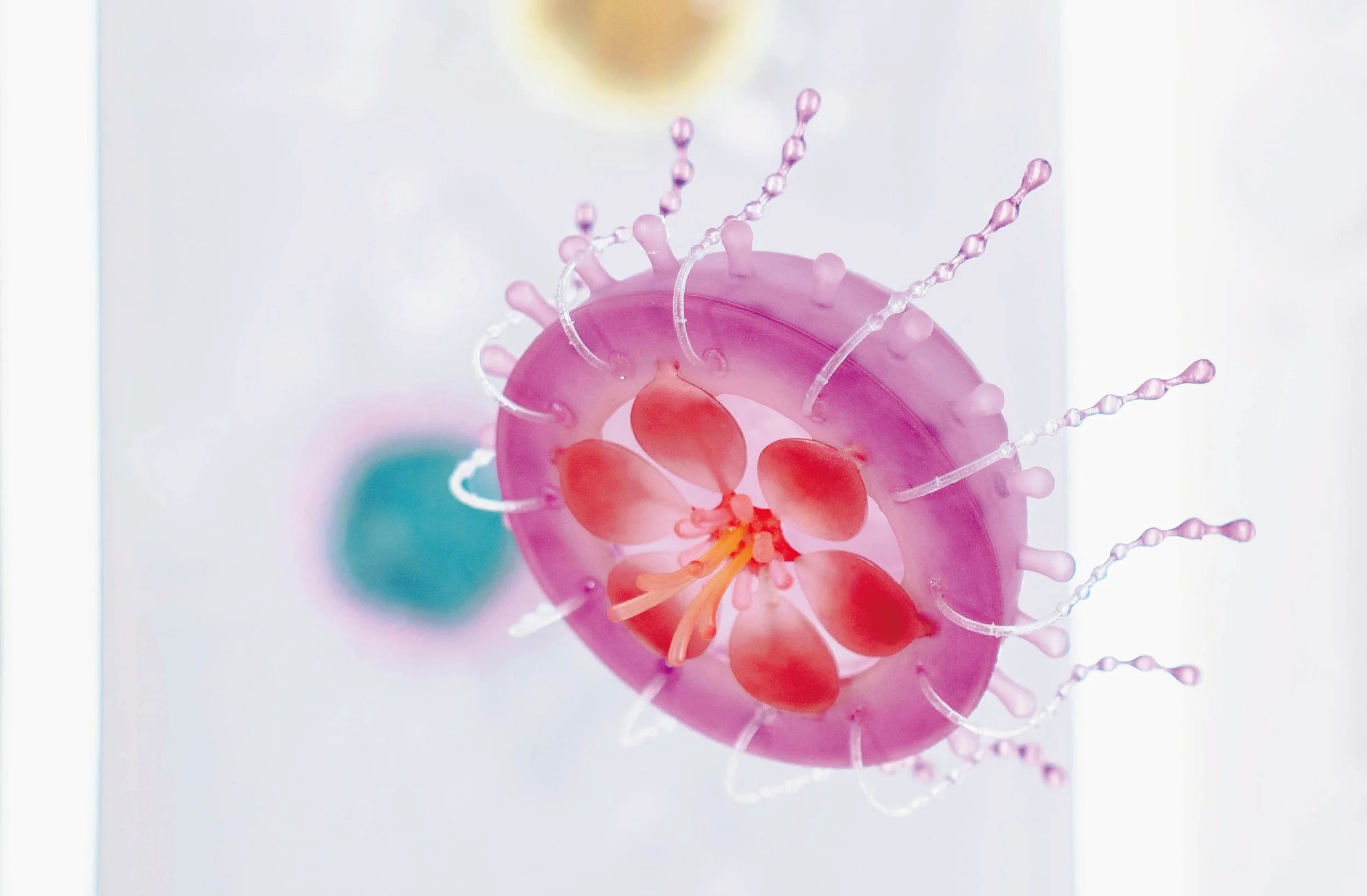A Living Meal in Zero Gravity
A Dutch Design Week 2025 highlight, AstroFeast by Joanna Cheng reimagines space food as a multisensory, living experience—where yeast, design, and technology meet to restore emotion and vitality to the routines of survival.
Somewhere beyond Earth’s orbit, within the cold, metallic quiet of a spacecraft, survival routines unfold with precision. Every system is engineered for efficiency—oxygen, light, movement, and food. Meals arrive in sealed pouches, compact and sterile, sustaining the body but leaving little for the senses. The space diet is a triumph of engineering but a failure of emotion. Food is more than just fuel; it represents connection, memory, and care—our most intimate form of self-preservation.
The speculative project AstroFeast, created by Joanna Cheng, addresses this absence. Inside a jellyfish-like vessel, yeast cultures ferment and expand, glowing gently as they grow. This slow, living process transforms eating into something more than mere intake—it becomes a sensory and emotional experience, echoing Earth’s rhythms within a sealed spacecraft.
Growing food in space presents challenges regarding gravity, light, and atmosphere. Plants struggle without soil, and meals are often reduced to powders or freeze-dried portions. While these systems prioritize nutrition and safety, they leave little room for pleasure or connection. Cheng responds to this reality by introducing a different form of life: microbial growth as nourishment and companionship. Instead of cultivating plants, AstroFeast cultivates experience—turning fermentation into a slow performance that stimulates sight, smell, and touch.
In AstroFeast, yeast serves both as an ingredient and a performer. The single-celled organism Saccharomyces cerevisiae is reimagined to produce new flavors and aromas through a process known as heterologous production. Travelers can select their preferred taste and color combinations and place them into a sculptural container inspired by jellyfish and blooming flowers. As fermentation begins, the container expands and breathes, forming a living meal that slowly reveals itself—an edible choreography unfolding in zero gravity.
It's a poetic image, but also a glimpse into a future that feels increasingly tangible. As the planet’s resources decline and agriculture struggles under climate pressure, scientists and designers look to synthetic biology for solutions—food without soil, farming without fields. In this context, efficiency replaces seasonality, and nutrition replaces flavor. What Cheng proposes is something gentler: a way to make these new systems sensual, emotional, and alive once again.
Cheng’s project raises important questions about the future of food. As eating becomes more engineered, how can it still engage the senses and emotions? AstroFeast approaches this question through design, transforming nourishment into a shared process among people, microbes, and machines.
As the yeast expands and the vessel breathes, it reveals a method of living that adapts rather than resists. Cheng’s project suggests that in the face of new environments, design can serve as a tool for observation—helping humans adjust, learn, and remain responsive to change.
The Blooming Space Supplement - Research by Joanna Cheng
Dried sheets of yeast and sugar - Research by Joanna Cheng
Project Concept and Design|Joanna Cheng
https://joanna-cheng.framer.website/projects
Science Consultants|Eric Hwang, Mike Kuo
TouchDesigner Collaboration|Liyieon Lien
3D Modelling and Object Production|Joanna Cheng
Project Photography and Filming|Allison Chuang
Exhibition details
Presented during Dutch Design Week 2025 - BIOART LABORATORIES
Dates: 18–26 October 2025
Opening hours: 11:00–18:00
Location: BioArt Laboratories - Oirschotsedijk 14-10
Resources
Food Fermentation in Space: Opportunities and Challenges – ScienceDirect
Managing Space Food Waste with Fermentation: Novel System Design Update – ResearchGate
Space Food Experiences: Designing Passengers’ Eating Experience Beyond Earth – Frontiers in Computer Science




